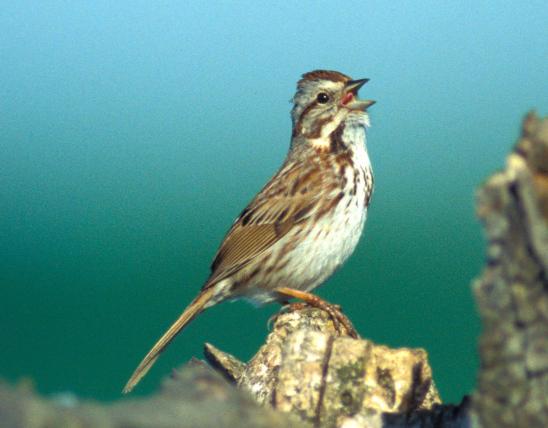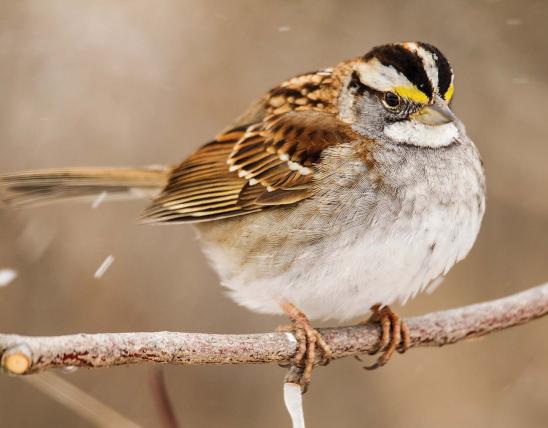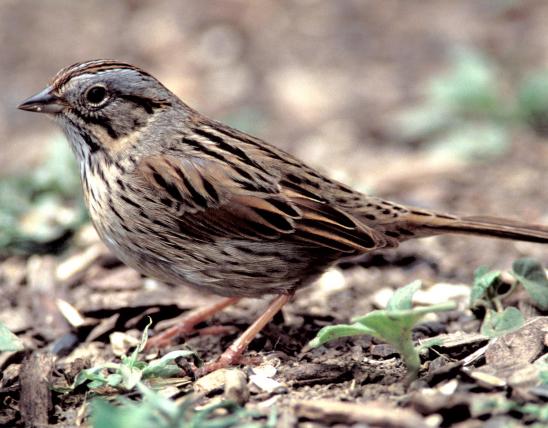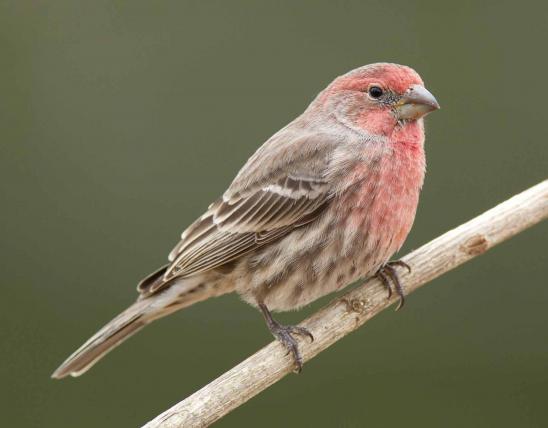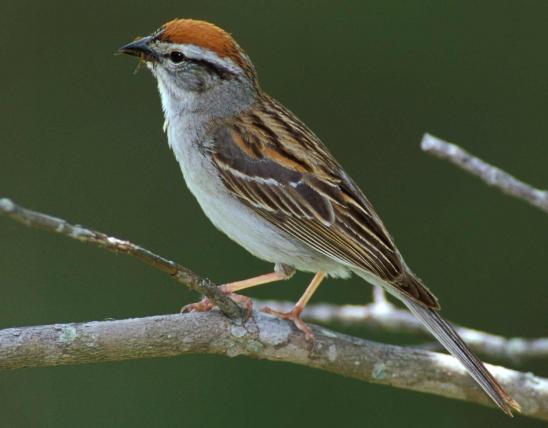
Adult savannah sparrow upperparts are streaked with gray, dark brown, and tan, with a dark-streaked crown having a narrow white central crown stripe. Sometimes raises crown feathers into a slight crest. The eyebrow is white with varying amounts of yellow. The tail is short and notched. Underparts are white, with dark streaks on the sides of the throat and breast. Often, the streaks form a central breast spot, making it closely resemble a song sparrow. The song is thin, high-pitched, with two or three introductory chip notes followed by two buzzy trills, the second lower than the first. The call is a high tseep.
Similar species: If you travel, keep in mind that this species varies a lot throughout its large North American range. Vesper sparrows have a white eyering and lack the pale eyebrow and dark eyeline; they also show white outer tail feathers in flight. Song sparrows have a central breast spot, but they lack the yellow eyebrow, have longer tails, and are generally darker, with coarser streaking on the flanks. White-throated sparrows have yellow in front of their eyes, but they live in the woods and have bold black-and-white markings on the head.
Length: 6¼ inches (tip of bill to tip of tail).

Statewide.
Habitat and Conservation
Savannas and woodlands; the savannah sparrow is a bird of open habitat with nearby dense cover. Quickly retreats to brush when threatened. Often seen foraging in moist habitats including lakeshores, weedy fields, crop fields, pastures, and prairies. Often forages in groups, flushing suddenly to nearby shrubs or trees, then returning.
Food
Forages on the ground in grass or crop stubble for insects, spiders, and seeds. They don't visit bird feeders, but they might visit brush piles for shelter. Like many birds, during breeding season, they eat a greater percentage of insects, spiders, and other animal matter, for the protein their growing young need. The winter diet is mostly seeds.
Status
As a migrant, common statewide in spring and fall. As a summer (nonbreeding) visitor, accidental statewide. As a winter resident, rare to common in southern Missouri, and casual or accidental in the north. Though this species can be found in savannas and other grassy habitats, it was actually named for Savannah, Georgia, where America's first great ornithologist, Alexander Wilson, collected a specimen. (So remember to capitalize this bird's name, and spell it with an h!)
Life Cycle
Savannah sparrows are absent in Missouri from June through mid-September. Their numbers in our state peak in October and April, as migrants pass through; southern Missouri is in the northern part of their winter range. Nests are built on the ground or in low vegetation, well hidden among taller grasses or low shrubs; the cups have coarse plant materials outside and finer materials within. A clutch comprises 2–6 eggs, which are incubated 12–13 days. After another 8–13 days, the young start leaving the nest. There can be up to 4 broods a year. After migrating, Savannah sparrows almost always return to nest in the same area where they were born. They can live for at least 6 years.
Human Connections
Human alterations of the landscape have caused fluctuations in savannah sparrow populations. In the early 1900s, when cleared forests created pastures, populations increased to the expanded favorable habitat. Then the birds decreased as the pastures reverted back to forest, or were turned into cities and suburbs, and newer agricultural practices reduced or eliminated pastures, fencerows, and thickets.
Ecosystem Connections
The familiar spittlebug, the larva of insects called froghoppers, sucks juices from plant stems much like an aphid. These tender, juicy insects surround themselves with a frothy, spitty mass to hide them from predators. Savannah sparrows aren't fooled, however, and snatch them up, anyway.
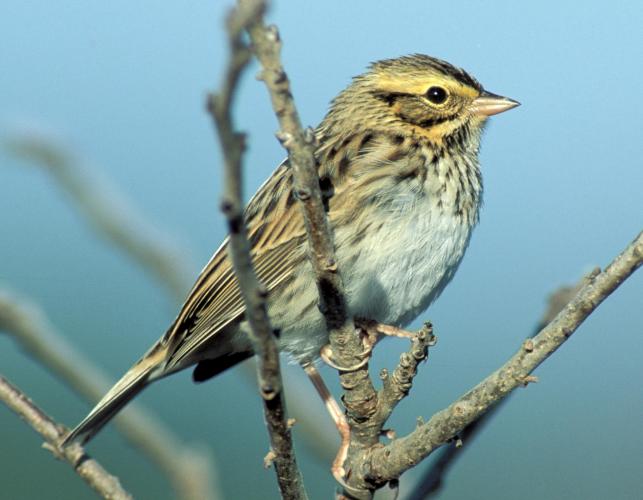
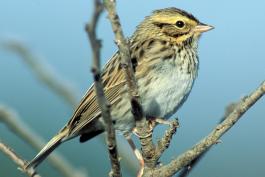

About 350 species of birds are likely to be seen in Missouri, though nearly 400 have been recorded within our borders. Most people know a bird when they see one — it has feathers, wings, and a bill. Birds are warm-blooded, and most species can fly. Many migrate hundreds or thousands of miles. Birds lay hard-shelled eggs (often in a nest), and the parents care for the young. Many communicate with songs and calls.






















